Bioenergy in the EU: new statistical data on SAF
TPES. Electricity. Heat supply. Transport.
The total energy supply (TES) of the EU28 in 2019 amounted to 65.8 exajoules (EJ). Renewable energy sources have a share of 15% or 10.0 EJ:
- biomass – 6.3 EJ (around 63% of renewable energy supply in 2019),
- wind energy – 1,6 EJ,
- hydropower – 1,2 EJ,
- solar energy – 0,7 EJ,
- geothermal energy – 0,3 EJ.
The overall use of bioenergy has continued to grow in the past decades, from 2.5 EJ to more than 6 EJ. Solid biofuels remain dominant reaching 4.3 EJ or almost 70% of bioenergy supply. 13% of bioenergy comes from liquid biofuels (0.8 EJ), 11% from biogas (0.7 EJ), and 7% from renewable waste (0.44 EJ).
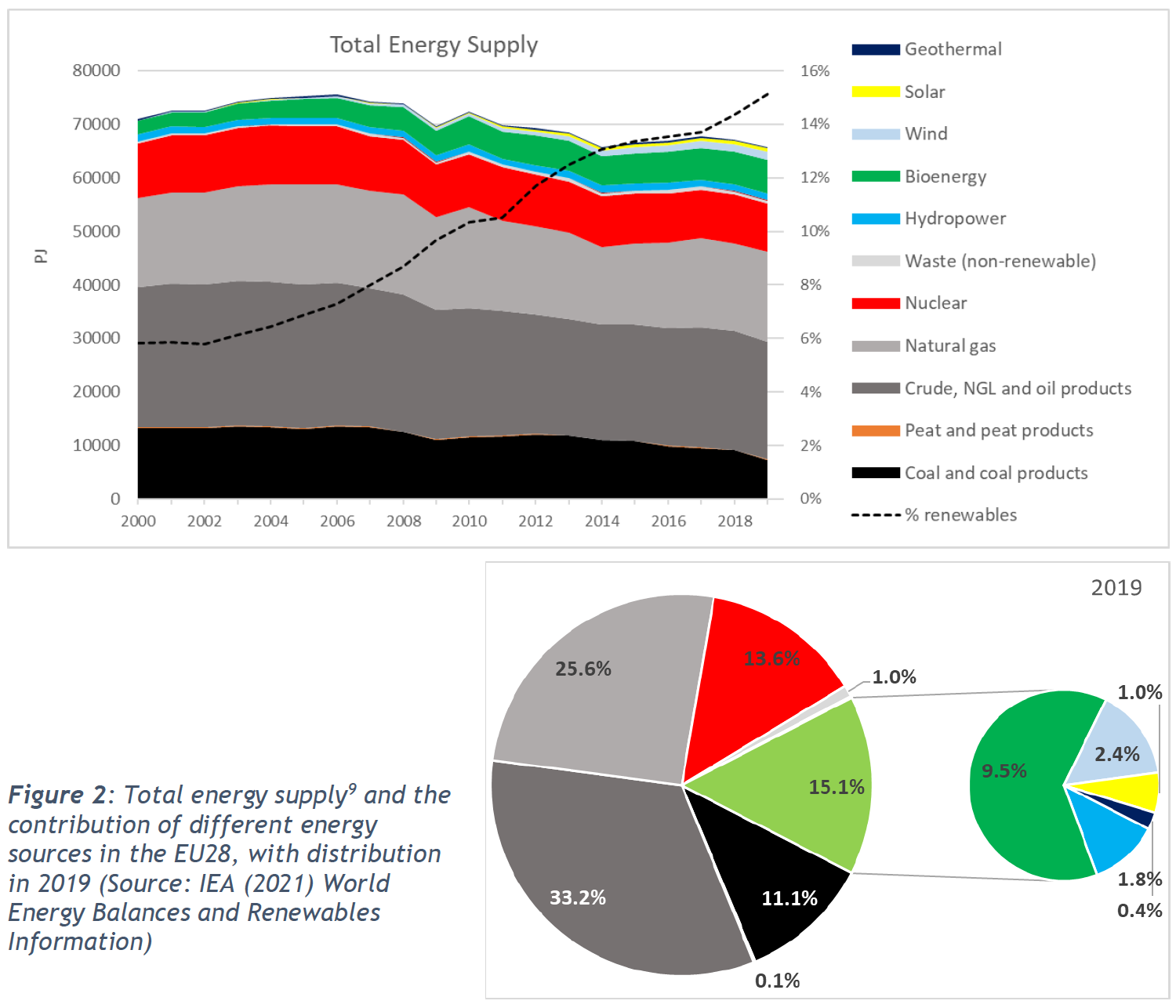
Role of bioenergy in total energy supply in the EU (2000-2019)
The overall 2019 share of renewables in final energy consumption among electricity, transportation, and heat sectors is 19%, with bioenergy making up 11% of the energy share.
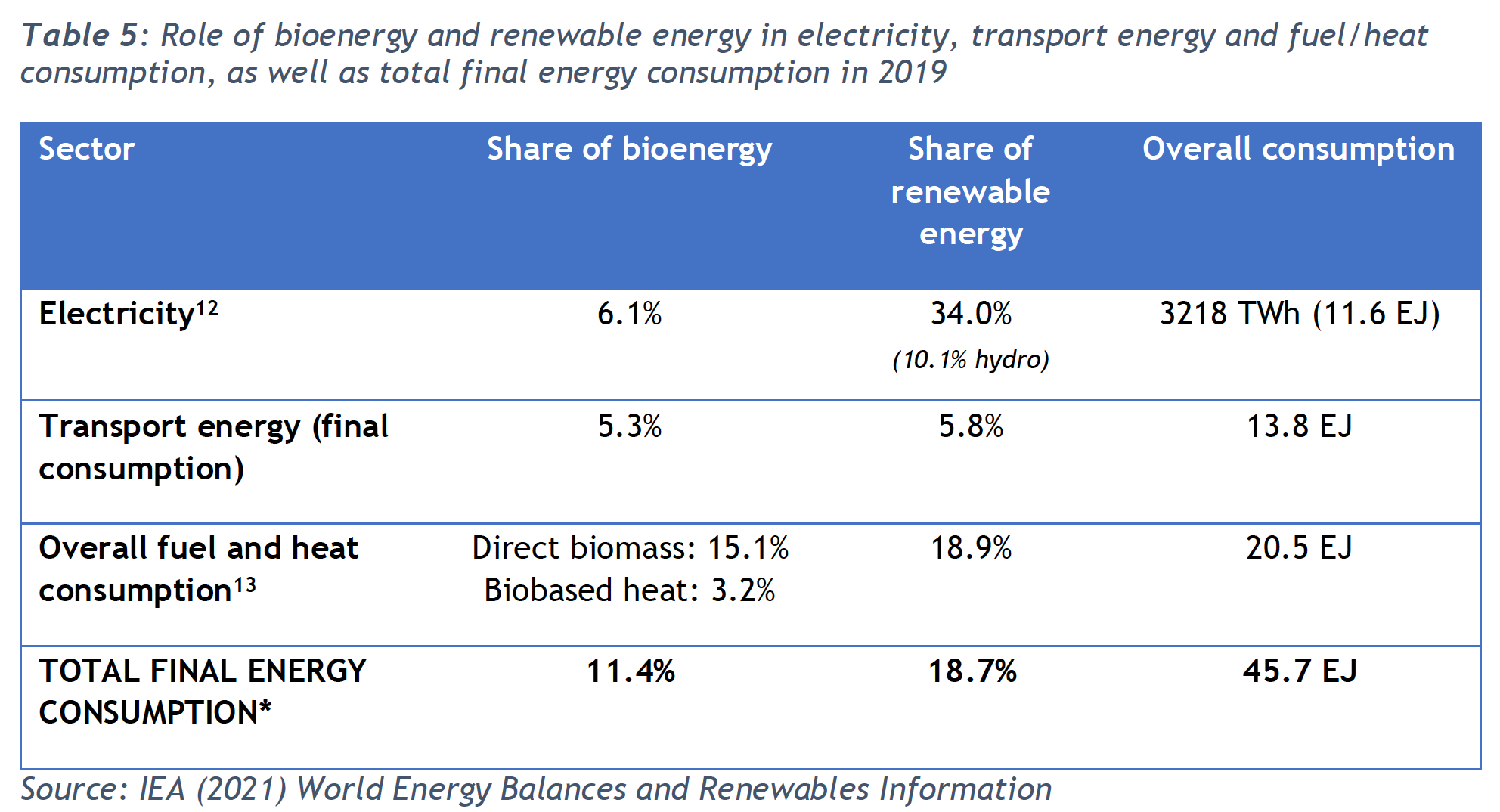
In general, bioenergy provides 9.5% of the total energy supply in the EU. The bioenergy supply per capita in the EU is 14 GJ/person, of which 9.6 GJ/person is solid biofuels, 1 GJ/person is renewable solid waste, 1.6 GJ/person is biogas and 1.8 GJ/person is liquid biofuels.
Trends
The use of solid biomass in residential applications and industry has been fairly stable around 2.8-2.9 EJ together. On the other hand, the use of solid biofuels for electricity and heat production has steadily increased in the past decades, from 0.3 EJ in 2000 to 1.4 EJ in 2019.
Liquid biofuels saw a strong growth between 2004 and 2010 from 0.1 EJ to 0.6 EJ. Levels have rather stabilized between 2010 and 2016 around 0.6 EJ. In the past years (after the publishment of the ILUC directive), growth has picked up again up to 0.8 EJ in 2019.
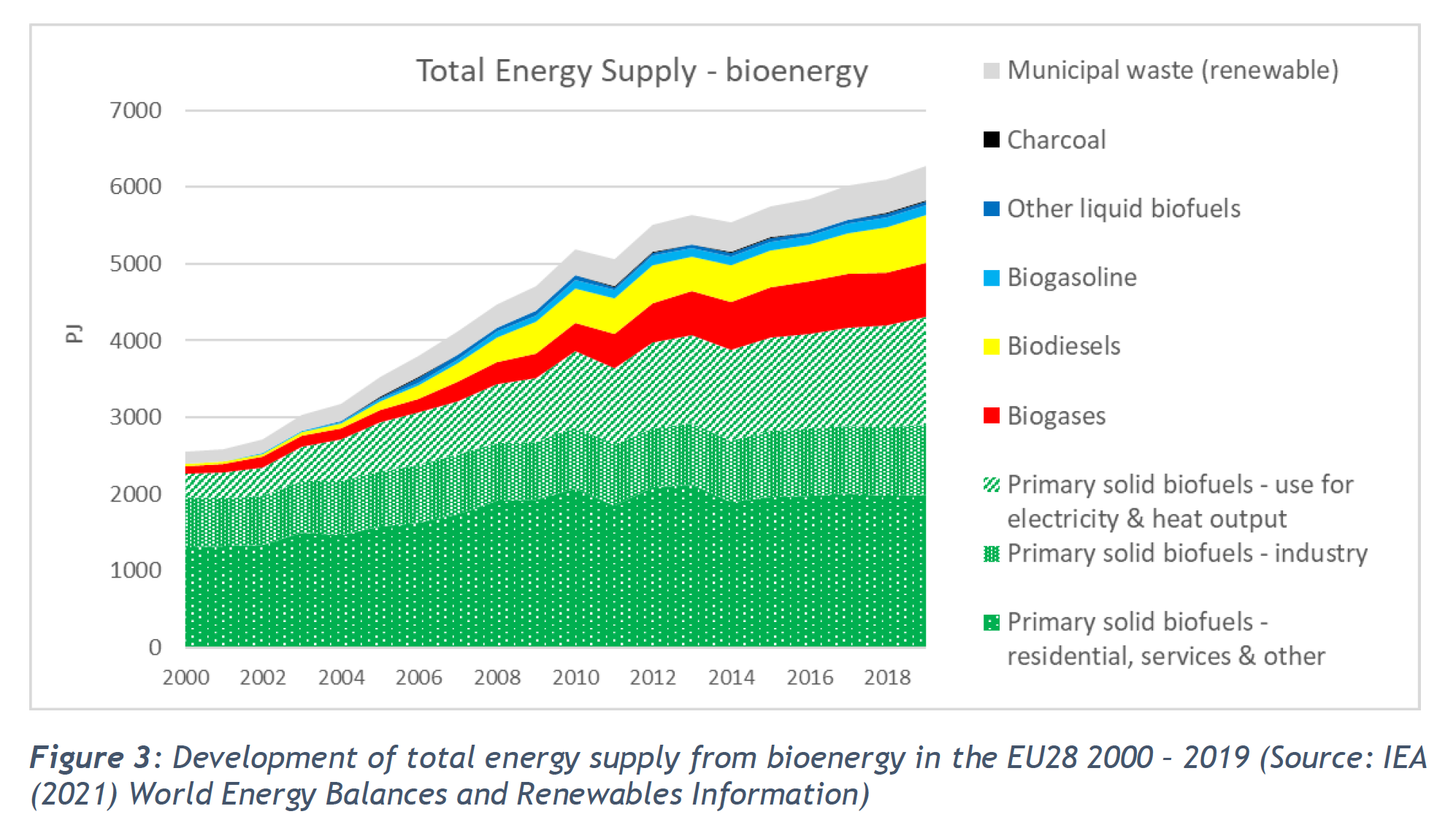
Biogas had a strong growth between 2006 to 2013 from 0.2 to 0.6 EJ. In recent years there is still growth, but at lower pace, reaching 0.7 EJ in 2019.
Renewable energy from MSW grew steadily from 0.16 EJ in 2000 to 0.44 EJ in recent years. There seems to be some stagnation in recent years (since 2017).
Read more on the Sustainable Agribusiness Forum (SAF).
Electricity
Renewable electricity increased steadily from 15% of power production in the early 2000s to 34% in 2019.
The main growth in renewable power has been in wind energy, steadily increasing from 60 TWh in 2004 up to 430 TWh in 2019, which represents 13% of power production in the EU. Hydropower used to be the dominating type of renewable power and has been fairly stable around 350 TWh (10% of power production) in the past decades.
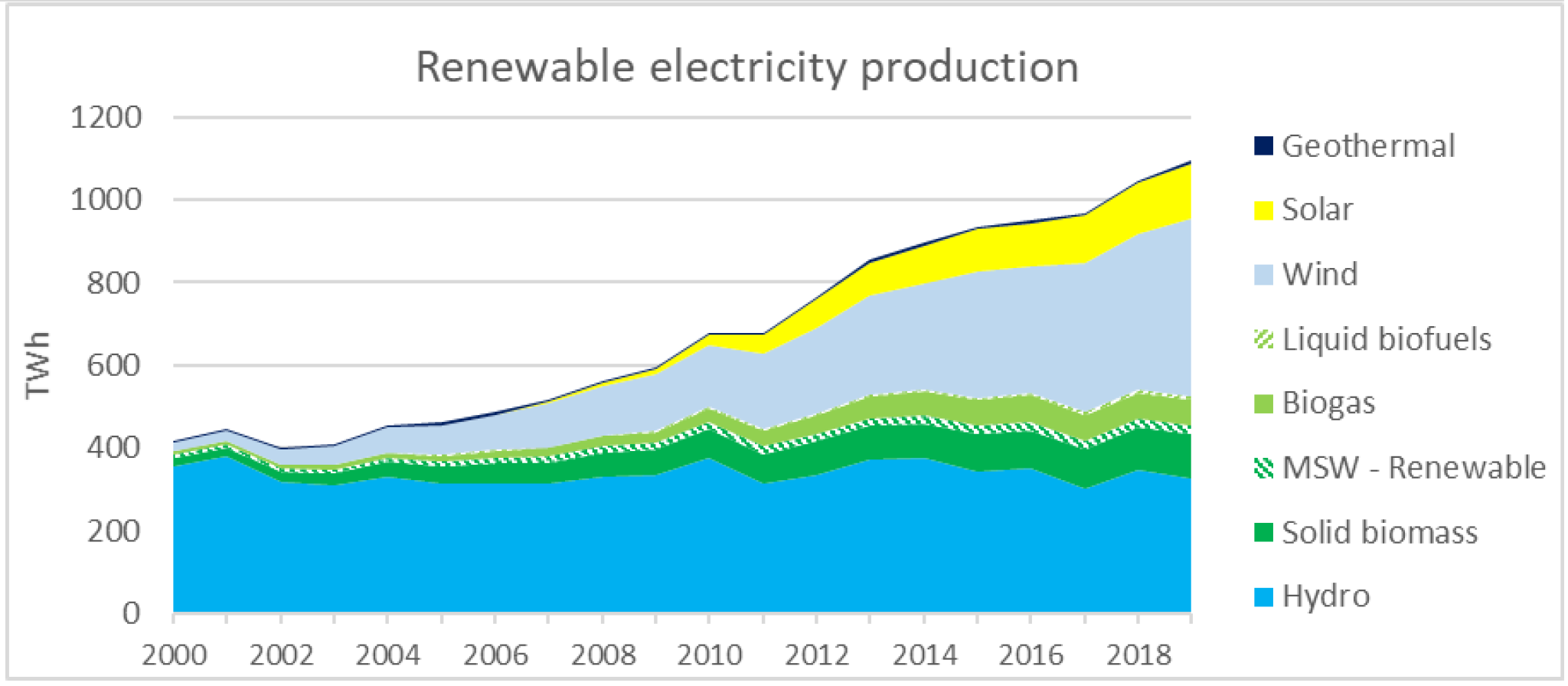
Biomass-based electricity represents 6% in 2019, split between solid biomass, biogas, and renewable MSW. Biobased electricity also grew 10 steadily in the past decades, but at a much lower pace than wind energy.
Solar power had a strong increase since 2009 from 14 TWh to 130 TWh in 2019 (4% of power production in the EU).
Heat
The direct use of biomass for heat represents 15% (3.1 EJ) in 2019 and is the main type of renewable in this sector. Heat output generated and sold by CHP plants and heat plants (e.g. through district heating) represents around 12% of fuel/heat provided in the EU28.
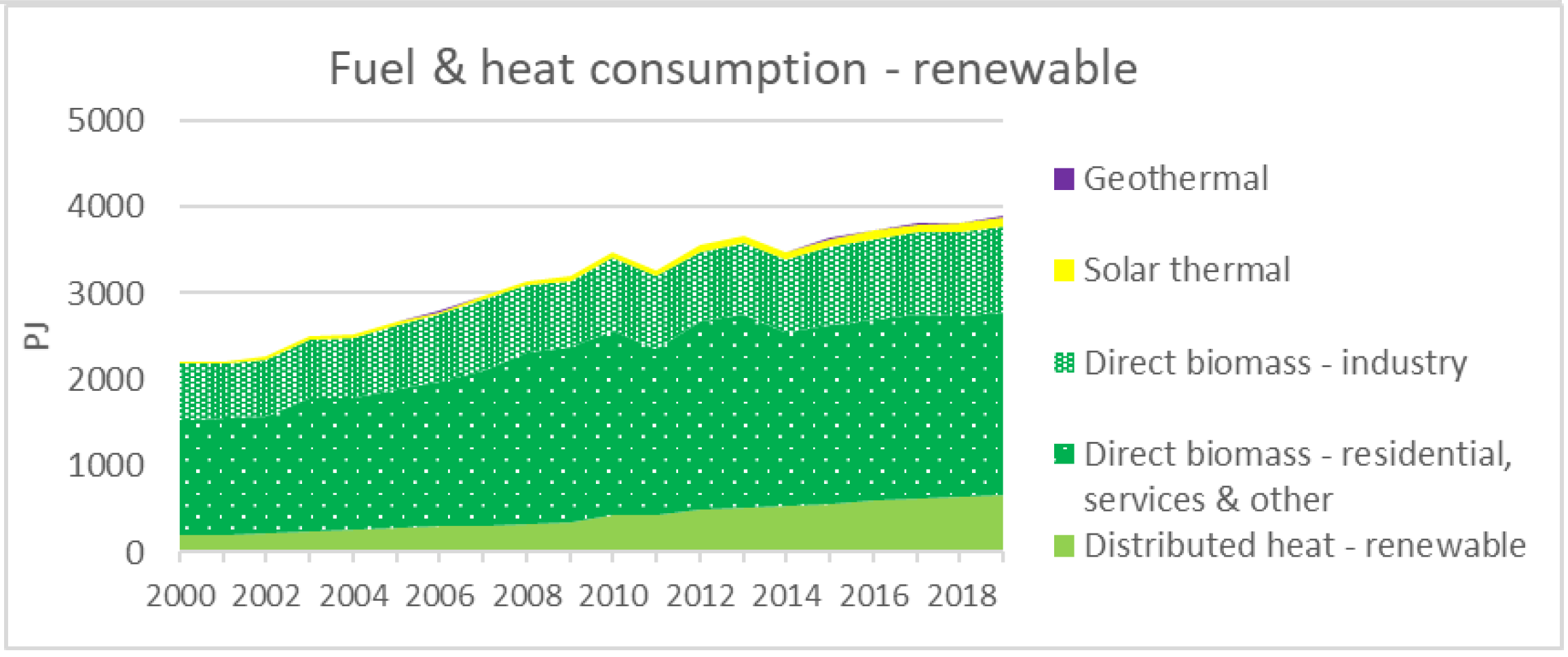
Overall levels of heat sales are fairly stable. Heat output is still for more than 60% fossil based, with a dominant role for natural gas, but also an important role for coal. The use of biomass for heat production increased over the years and now represents 27% of heat output.
Transport
In the early 2000s, there was already some consumption of biodiesel, particularly in Germany and France. Between 2004 and 2010 there was a strong increase of biofuels up to a combined level of 4% (by energy) of transport energy. However, these levels stalled up to 2016, likely in relation to uncertainties regarding iLUC restrictions.
In recent years (after the publication of the iLUC Directive) growth has resumed again. On average biodiesel (FAME and HVO together) represented 6.4% by the energy of diesel consumption in 2019. Bioethanol on average represented 3.7% by energy of gasoline consumption.
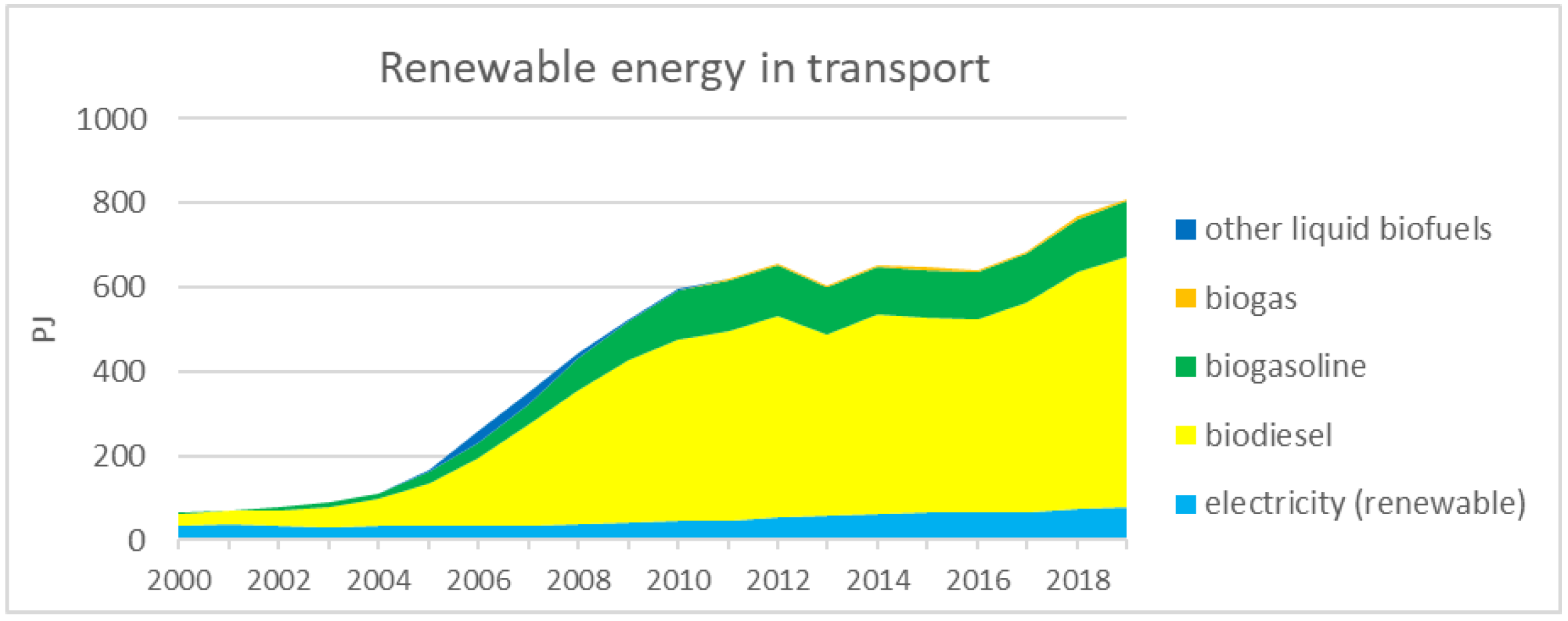
About 30% of biofuels consumed in the EU28 in 2019 are qualified as ‘advanced biofuels’, meaning that they are produced from residues and waste (particularly used oils for biodiesel). These can be double-counted towards the 10% renewable energy in transport target at the EU level.
Electricity (of which one-third is renewable) represents a share of 1.7% of total transport energy use. This is mostly in rail – the use of electricity in road vehicles is still marginal in 2019 (0.08% of total transport energy use) but can be expected to grow in the coming years.
According to the report of the Program of Cooperation in Bioenergy Technologies of the International Energy Agency.
It will be recalled that UABIO is a partner of the SAF Ukraine (Sustainable Agribusiness Forum) that was created in 2017 on the initiative and support of the European Bank for Reconstruction and Development (EBRD).


